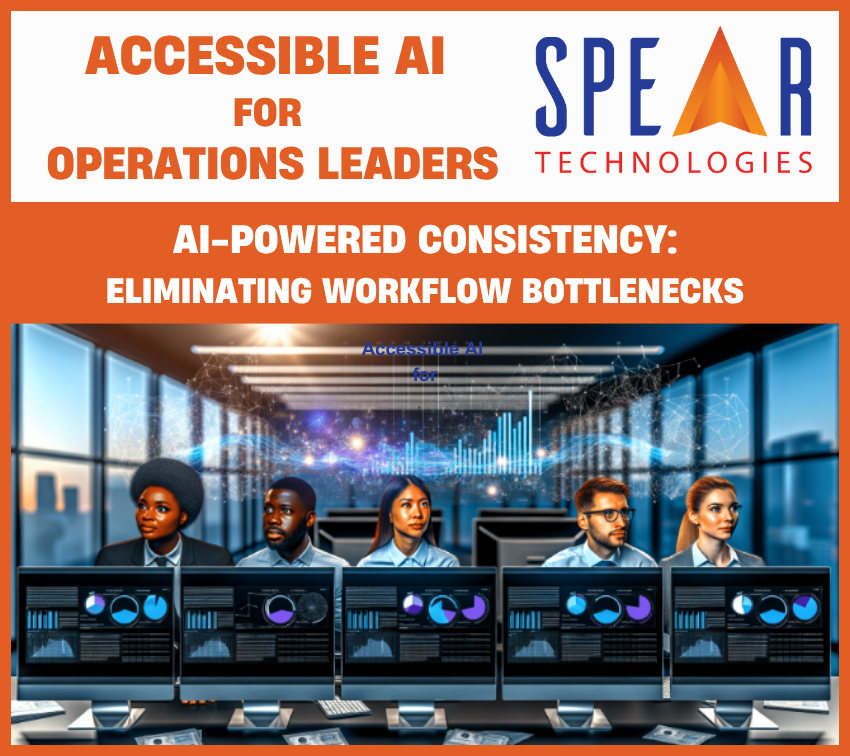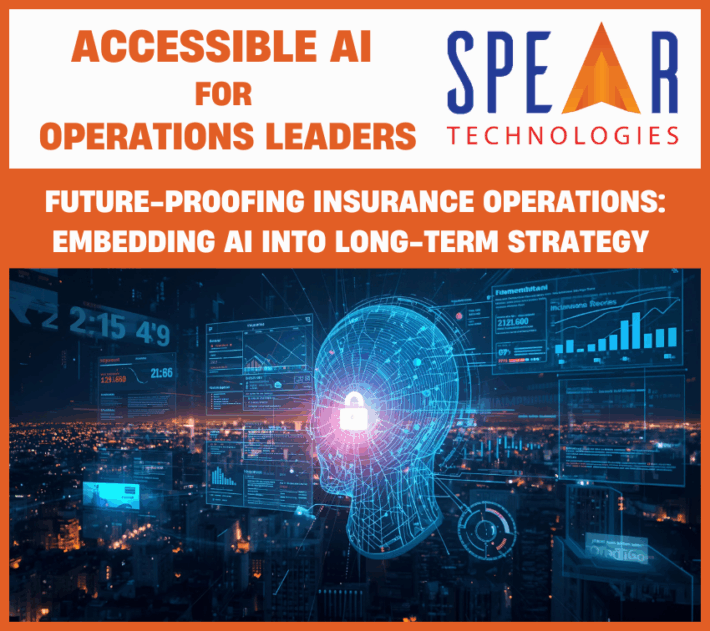Accessible AI for Operations Leaders: AI-Powered Consistency: Eliminating Workflow Bottlenecks Across Teams and Vendors

In property and casualty insurance, operational consistency is the foundation of efficiency, compliance, and customer trust. Yet for many operations leaders, achieving that consistency across multiple teams, vendors, and systems remains one of the biggest challenges.
From claims administration to vendor coordination, each process introduces the risk of delays, miscommunication, and non-standard execution. These inconsistencies don’t just affect performance—they increase compliance exposure and inflate costs.
How Accessible AI Enforces Standardization Across Distributed Operations
Traditional systems leave too much room for interpretation. Adjusters, vendors, and TPAs each follow slightly different processes, often with limited oversight. Accessible AI changes this dynamic by embedding standardization directly into workflows.
Through automated decision models, guided workflows, and virtual agents, Accessible AI ensures that every claim follows the same playbook—no matter who handles it. That consistency not only reduces variation and error but also enables true operational alignment between internal teams and external partners.
Operations leaders can:
- Enforce consistent decision-making through AI-powered rules that reflect internal policies and compliance requirements.
- Automate routine communications, ensuring that every vendor, adjuster, or attorney receives the same, accurate instructions.
- Surface real-time dashboards that reveal bottlenecks, deviations, and cycle delays before they compound into bigger issues.
With AI serving as both a digital auditor and process enforcer, insurers can build operational discipline at scale—without relying solely on manual oversight.
Virtual Agents and Dashboards That Improve Transparency
One of the most valuable outcomes of Accessible AI is the visibility it brings to distributed operations.
Virtual agents can automatically track, log, and route critical updates—whether they’re coming from a field adjuster, a medical provider, or a subrogation partner. Dashboards give operations leaders the ability to see performance metrics across vendors, claims, and teams in real time.
This level of transparency eliminates blind spots that cause backlogs or compliance misses. Instead of reacting to delays after they happen, operations teams can proactively manage them as they arise.
- Virtual Agents streamline vendor communication, ensuring consistent updates and follow-ups across claims.
- Operational Dashboards centralize insights, allowing leadership to monitor performance trends and take corrective action faster.
- Automated Alerts notify teams when a process deviates from standards—preventing escalation before it impacts cycle times or outcomes.
Together, these capabilities improve accountability, promote transparency, and build confidence among stakeholders.
Strengthening Compliance Through Consistency
For many insurers, inconsistent execution is the root cause of compliance gaps. Whether it’s a missed documentation step, an unlogged communication, or a variation in adjudication criteria—small deviations can lead to costly penalties or audit findings.
Accessible AI ensures compliance by making adherence automatic. Virtual agents verify that all required steps are completed before a claim advances. Intelligent checklists and embedded business rules flag potential gaps in documentation, coding, or eligibility.
This not only reduces manual rework but also supports clean audit trails—essential for demonstrating regulatory compliance.
By automating the consistent application of business rules, Accessible AI transforms compliance from a reactive burden into a built-in strength.
Empowering Business Users with AI They Can Shape
If you’ve read the first few articles, this will be a refresher. If you’re joining us here, it’s essential context. Every Accessible AI use case builds on this foundation: putting AI into the hands of business users who know the work best.
One of the most transformative aspects of accessible AI in insurance is the shift from developer-led to business-led model interaction. In traditional setups, any customization or retraining of AI models requires intervention from IT teams, data scientists, or external vendors. This dependency creates bottlenecks, slows innovation, and disconnects model development from those who understand the business problems best—your underwriters, claims adjusters, fraud investigators, and customer experience teams.
Why Business-User Accessibility Is a Game-Changer
When AI tools are designed for business users, the result is more responsive, agile, and relevant model development. Empowering business users to adapt and train AI models on their own yields multiple advantages:
- Faster Time-to-Value: No waiting on IT backlogs or vendor response times
- Higher Accuracy: Models reflect real-world operational needs and are continually refined by domain experts
- Greater Adoption: Tools that align with existing workflows and skill sets see higher engagement
- Scalable Innovation: Business teams become active participants in digital transformation, not passive consumers
Some Tangible Benefits to Empowering Teams
The numbers show just how impactful it can be when operations teams are empowered with AI-driven tools:
- Operational Efficiency: Streamlined workflows and automation can reduce administrative and processing costs by up to 30%.
- Faster Turnaround: Cycle time improvements of 25–35% help operations teams process more claims with fewer handoffs.
- Fewer Escalations: Avoiding late-stage interventions in complex claims can lower overall cost exposure by 20–25%.
- Compliance and Audit Readiness: Automating documentation and eligibility verification can reduce compliance errors by up to 15%, protecting revenue and reputation.
With these benefits in reach, operations leaders can no longer afford to rely on inconsistent processes. Accessible AI eliminates workflow bottlenecks, standardizes execution, and provides the transparency needed to ensure smooth, compliant operations—across every team and vendor relationship.
Case Insights: Fewer Bottlenecks, Lower Litigation
In one example, an insurance administrator failed to flag high-risk claims early in the process, which led to mounting litigation rates. Operations leaders implemented Accessible AI models to scan claim notes and claimant histories for early warning signals.
The results were clear:
- Litigation rates fell by double digits as cases were redirected before disputes escalated.
- Resolution times improved, with fewer bottlenecks in claims workflows.
- Operational costs declined, as resources were no longer consumed by avoidable late-stage interventions.
For operations leaders, the lesson is simple: early intervention isn’t just a claims strategy—it’s an operational advantage.
Why It Matters for Operations Leadership
For COOs and operations leaders, Accessible AI delivers more than just automation—it delivers control.
By enforcing consistency, reducing variation, and automating oversight, operations leaders can achieve:
- Greater throughput with fewer errors
- Stronger vendor accountability
- Reduced compliance risk
- Scalable, repeatable excellence across the enterprise
Accessible AI transforms operations from reactive to orchestrated—aligning people, processes, and partners under a unified framework of consistency.
Next in the Series: Embedding Automation for Communication Accuracy and Compliance —including how AI-powered email triage ensures consistent, compliant responses, while reducing delays and errors in high-volume communications.
Ready to see how SpearClaims™ with Accessible AI equips operations leaders to reduce costs and manage high-risk claims proactively?
Schedule a Demo to see how SpearClaims™ with accessible AI empowers operations leaders to streamline workflows, ensure consistency, and scale service delivery without adding administrative burden.
Request Pricing to learn how cost-effective it can be to reduce compliance risk, eliminate inefficiencies, and deliver stronger outcomes across your operations.



